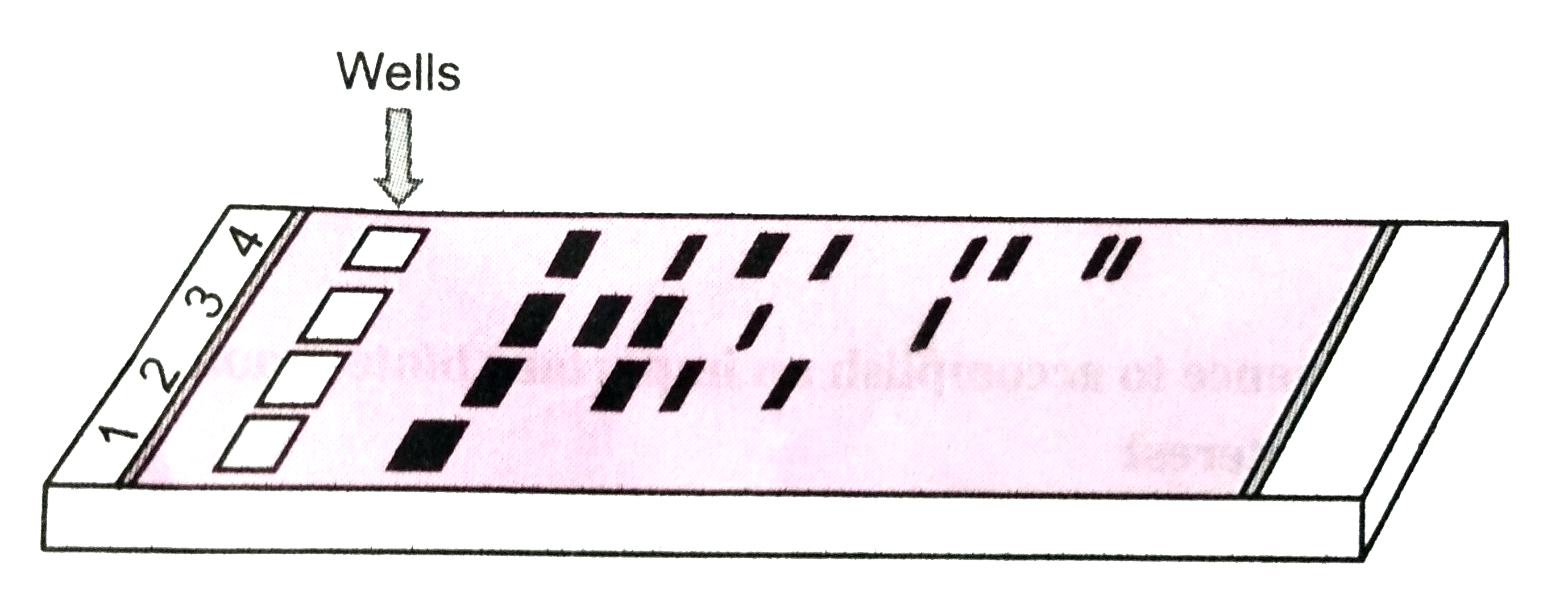Assertion: One can see bright orange coloured band of DNA in a ethidium bromide stained gel exposed to infra-red light
Reason :One cannot see pure DNA fragments in the visible & UV light & without staining
If both Assertion & Reason are True & the Reason is a correct explanation of the Assertion
It both Assertion & Reason are True but Reason is not a correct explanation of the Assetion
If Assertion is True but the Reason is False
If both Assertion & Reason are false
The correct Answer is:D
To solve the assertion-reason question, we need to analyze both the assertion and the reason provided.
1. Understanding the Assertion:
- The assertion states: "One can see bright orange colored band of DNA in an ethidium bromide stained gel exposed to infrared light."
- Ethidium bromide is a fluorescent dye used to stain DNA. When exposed to UV light, it emits a bright orange color, allowing visualization of DNA bands. However, it does not emit this color under infrared light.
Conclusion: The assertion is false because the DNA bands are visible under UV light, not infrared light.
2. Understanding the Reason:
- The reason states: "One cannot see pure DNA fragments in the visible & UV light without staining."
- Pure DNA fragments are indeed not visible to the naked eye without staining. However, when stained with ethidium bromide, they can be visualized under UV light.
Conclusion: The reason is false because while it is true that pure DNA is not visible without staining, the statement implies that it cannot be seen at all under UV light, which is incorrect.
3. Final Evaluation:
- Since both the assertion and the reason are false, the correct answer is that both the assertion and reason are false.
Final Answer:
Both the assertion and reason are false.
---
- The assertion states: "One can see bright orange colored band of DNA in an ethidium bromide stained gel exposed to infrared light."
- Ethidium bromide is a fluorescent dye used to stain DNA. When exposed to UV light, it emits a bright orange color, allowing visualization of DNA bands. However, it does not emit this color under infrared light.
- The reason states: "One cannot see pure DNA fragments in the visible & UV light without staining."
- Pure DNA fragments are indeed not visible to the naked eye without staining. However, when stained with ethidium bromide, they can be visualized under UV light.
- Since both the assertion and the reason are false, the correct answer is that both the assertion and reason are false.
Both the assertion and reason are false.
Topper's Solved these Questions
- BIOTECHNOLOGY AND MICROBES IN HUMAN WELFAREBOOK - ALLENCHAPTER - BIOTECHNOLOGY AND MICROBES IN HUMAN WELFAREEXERCISE - Exercise I
60 Videos
- BIOTECHNOLOGY AND MICROBES IN HUMAN WELFAREBOOK - ALLENCHAPTER - BIOTECHNOLOGY AND MICROBES IN HUMAN WELFAREEXERCISE - ExerciseII
18 Videos
- BIOTECHNOLOGY AND MICROBES IN HUMAN WELFAREBOOK - ALLENCHAPTER - BIOTECHNOLOGY AND MICROBES IN HUMAN WELFAREEXERCISE - Exercise III
10 Videos
- BIOTECHNOLOGY AND ITS APPLICATION BOOK - ALLENCHAPTER - BIOTECHNOLOGY AND ITS APPLICATION EXERCISE - Question
57 Videos
- BODY FLUIDS AND CIRCULATIONBOOK - ALLENCHAPTER - BODY FLUIDS AND CIRCULATIONEXERCISE - S
45 Videos
Similar Questions
Knowledge Check
Study the given figure carefully and select the incorrect statements regarding this.

(i) It represents a typical agarose gel electrophoresis in which lane 1 contains undigested DNA
(ii) Smallest DNA bands are formed at A and largest DNA bands are formed at B
(iii) The separated DNA fragments can be visualized after staining in the visible light
(iv) The separated DNA bands are cut out from the agarose gel and extracted from the gel piece. this step is known as elution.A(i) and (ii)B(ii) and (iii)C(ii) and (iv)DPerson can see the bands without staining.Which of the following statements are correct ?
(i) Restriction enzymes cut the strand of DNA a little away from the centre of the palindrome site, but between the same two bases on the opposite strands.
(ii) Hind ll always cuts DNA molecules at a particular point by reconginisng a specific sequence of six base pairs.
(iii) Separated DNA fragments cannot be visualised without staining on an agarose gel electrophoresis.
(iv) 'Ori' is the sequence responsible for controlling the copy number.
(v) DNA is a positively charged molecule.A(i), (iii) and (v)B(i), (ii),(iii) and (iv)C(iii),(iv) and (v)D(i),(ii),(iii),(iv) and (v)
After electrophoresis the separated DNA fragment can be vishualised ethidium bromide gel exposed UV light . These DNA fragments appear as _______ coloured bands :
View SolutionWhich colour would you find in DNA strands after stain- ing with Ethidium bromide in the presence of UV light ?
View Solutiona) How do DNA fragments migrate and resolve in a Gel electrophoresis?
b) How lane one is different from lane 2,3 and 4 in the GEL electrophoresis set up?
c) How pure DNA fragments are made observable in the visible light?

View SolutionGiven below are four statements pertaining to separation of DNA fragments using gel electrophoresis. Identify the incorrect statements.
(a) DNA is negatively charged molecule and so it is loaded on gel towards the Anode terminal
(b) DNA fragments travel along the surface of the gel whose concentration does not affect movement of DNA.
(c) Smaller the size of DNA fragment larger is the distance it travels through it.
(d) Pure DNA can be visualized directly by exposing UV radiation.
Choose correct answer from the options given below
View SolutionA mixture of fragmented DNA was electrophoresed in an agarose gel. After staining the gel with ethidium bromide, no DNA bands were observed. What could be the reasons?
View SolutionA mixture of fragmented DNA was electrophoresed in an agarose gel. After staining the gel with ethidium bromide, no DNA bands were observed. What could be the reason?
View Solution
